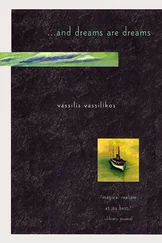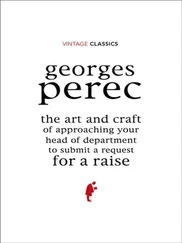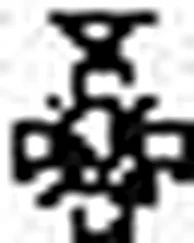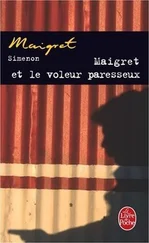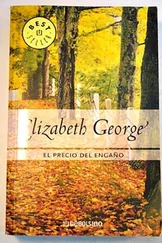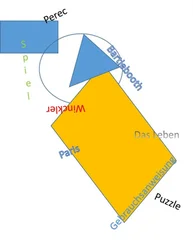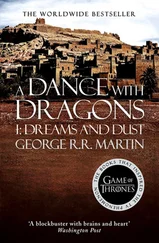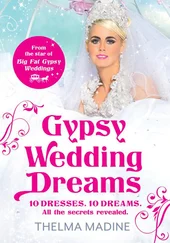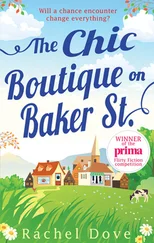I make it into the caravan. It’s my room. Z.’s might be upstairs, but it seems less and less certain that Z. is even there.
The animal has managed to enter partway between the first and second doors. Suddenly I am so frightened that it will make it into my room, then scare me by hiding in the nooks and crannies, that I decide to kill it. I lay it across my lap; I squeeze its neck, it fights back, but weakly. It looks harmless (frightened, resigned, big sad eyes); its slender paws twitch in furtive little jolts. I squeeze harder. I realize I’m killing it, and soon it’s a small, motionless child. The pressure in his neck veins has increased, grown stronger and stronger, and suddenly stopped.
(I wake up, fingers all numb, soaked in sweat)
A bit later (waking dream)
I am in a dark room. In front of me is a door open onto a dimly lit room. A woman with grey hair and wearing a long dress comes and goes.
But what had been innocuous thus far, not even upsetting, is all at once horrifying: it’s the same woman as that character in Psycho (a young madman dressed like his elderly mother), the sight of whom (in Sfax, ten years earlier) had disturbed me so much that the whole of the night after I was kept awake just remembering my panic and hearing, under the bed and other furniture, noises made by an imaginary animal.
THREE DREAMS FROM J. L.
The Palais de la Défense, I
I am in the Palais de la Défense. It is crumbling.
I rush down a staircase with my wife.
The stone bridge
A stone bridge, at the crossing of a road and a river.
A signal sign indicates the name of the place:
(YOU)
In parentheses.
The Palais de la Défense, II
I am in the Palais de la Défense. Its enormous vault seems to be opening, then closing.
Later: I am still in the Palais de la Défense. There is no longer a vault, or, rather, the vault, the palace, are everywhere.
The chase in Dublin
An action movie in color; the color is very flat, a fawn-toned monochrome, very “Hollywood” (like Douglas Sirk’s Captain Lightfoot or Raoul Walsh’s The World in His Arms).
It takes place in Dublin, in the XIXth century.
The single central character, whom I am shadowing, is a revolutionary chief who has either been handed over to the police or, rather, been sentenced to death by his former comrades.
He knows it.
He is walking with a small dog and he knows that as soon as two dogs come to track him it will be the signal for the assassins to show themselves.
He does not try to escape what is clearly inevitable; on the contrary, he keeps walking, shows his face all over town, goes into pubs, etc. People turn away from him, or look at him with hatred, spite or pity. But no dog will even come close to his dog.
But suddenly, at one point, the dog escapes her master and runs off.
Hasty run to catch her. For he is willing to die, but he does not want to know when and by whose hand.
Crossing courtyards
Scaling walls
Climbing stairs
Very upsetting: everything and everyone become threatening.
There are at least two shots of the same circular path (actually, the scene always goes in a circle and we end up where we began — like in an engraving by that Swiss artist whose name escapes me (Escher) or, rather, like being on a gigantic Mōbius strip.
There could be scenes with a bit of a “Pepe le Moko” feel to them.
At one point, a bit distressed, I try to “make the image go faster” (to watch myself run up the stairs faster) but I can’t.
Making the meal
Z. is throwing a party for a friend. On the other side of a small partition, we — i.e., me supervising a crowd of kitchen hands — are making dinner. We’re in high spirits, we’re singing. I’m making some kind of cream, mayonnaise or flan, using lots of ingredients out of boxes: how easy this is! How appetizing!
But — maybe later, at the end — a small animal comes and eats from the plate.
I’m very cheerful. I am the fool, the favored entertainer.
Apartment
Henri G.’s apartment. Interconnected rooms in “quincunx formation.”
In each room, stereo equipment: tape recorders, radios, stereos, and more, and more, ever more perfect.
High fidelity
I am walking with P. across the “high fidelity” section of a department store. Maybe one of the appliances has a particularly remarkable shape?
The tank
P. and one of her friends and I have moved into an abandoned house. Though I recall having recently drunk water from the tap, we are told to use only mineral water, even to cook our food. But the bottle of water we find doesn’t even have a cap.
We sit down to eat. Under the table we find (a bit like a chewed and abandoned piece of gum) a bit of pâté. Though it is likely several days old, it doesn’t seem rotten in the slightest, but P. throws it out in disgust.
Out of the high, narrow window, I notice an immense tank. It’s actually a cliff, but it has the unmistakable look of a tank: large metallic plates covered with layers of varnish or paint that are chipping off in patches or coming loose from their base, like huge blisters. The whole thing looks muddy, dirty and slippery.
Soon I make out, moving from left to right, a small boy running on the upper tracks of the tank, which is really the length of a path carved into the face of the cliff. A man is chasing him. Another man pops up and blocks his passage. The child’s only chance of escape is to jump, but it’s truly a jump into the wide open and his life is at stake. It seems clear that he’s hesitant to dive, but at the last minute he loses his balance and jumps, like a child who is pushed into a pool and decides to make a dive of it once he realizes he’s going to fall into the water anyway.
At the very bottom of the cliff-tank is a lake that I can see from the window. P. and her friend are now on the opposite shore.
The child falls into the lake, feet first, but it’s as though he had jumped from only a few centimeters. There is very little water. The child keeps running toward the center of the lake, then, losing his footing, begins to swim. The two men swim after him. They are obviously cops and a police boat sets off from the bank and blocks the child’s path. He dives down and emerges a bit farther off, but this time he’s completely surrounded. Then a new person pops up: a man with a beard and maybe a pistol. He is threatening the police, not to kill them but to kill himself if they don’t let the child go. They do.
I catch up with P. on the bank. We recount indignantly what we have just seen, like a scandalous and revealing news story.
Concentration camp in the snow
or
Winter sports in the camp
Only a single image remains: that of someone with shoes made of very hard snow, or ice, irresistibly suggesting the idea of a hockey puck.
Читать дальше

